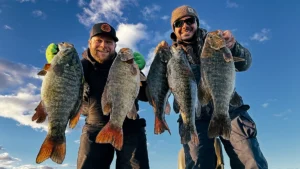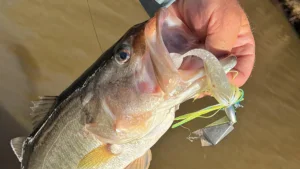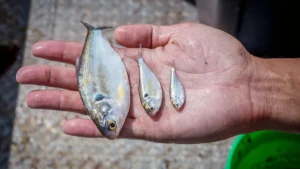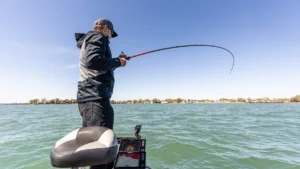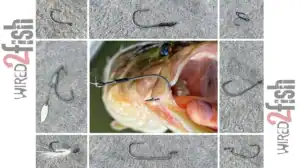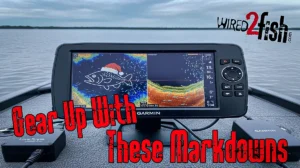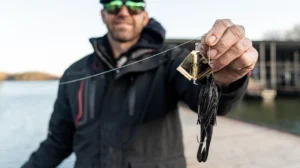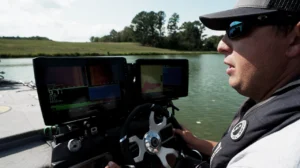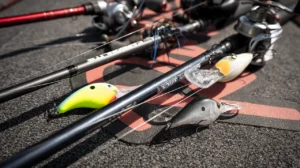November is here. No more pump fakes in the South where I live — it’s actually starting to get cold now. The nightly lows are in the 40s and the highs often hovering below 70. Now, I could all but hear the audible scoffing of my northern brethren. I understand this isn’t what you’d consider cold. But for us southerners, anything south of sweltering is a nice change of pace.
Along with this cooler weather across the country comes a change in the fishing as well. Massive schools of baitfish are on the move, migrating from deeper to shallower water, for the time being. This creates tons of opportunity from midrange points and humps to shallow banks and flats. With all this in mind, here are the baits I’ll be fishing in November in the southeast as well as a few suggestions from other anglers around the country.
Krej

The Berkley Krej has become a staple in my boat the last couple falls. However, I don’t really use it for its primary designed intent. This bait was built to be the mirror image of a jerkbait with its upturned bill and innate ability to sink as opposed to float. The odd name “Krej” is actually just “jerk” spelled backwards. This bait was designed to pair with forward-facing sonar. Cast the bait out, let it sink to the fish, and then twitch it up.
I have found this to be a phenomenal bait for schooling fish in the fall. The Berkley Krej 85 jerkbait is just over 3 inches long and weighs 2/5 of an ounce. That doesn’t sound like much, but in reality, this solid little nugget can be cast a long way towards busting schoolers. Reeling it along the surface, it has the action of a fast moving wake bait. Which often is unbearable for bass below who come up and crash on it. It’s a fun bait in November for sure.
Jika Rig
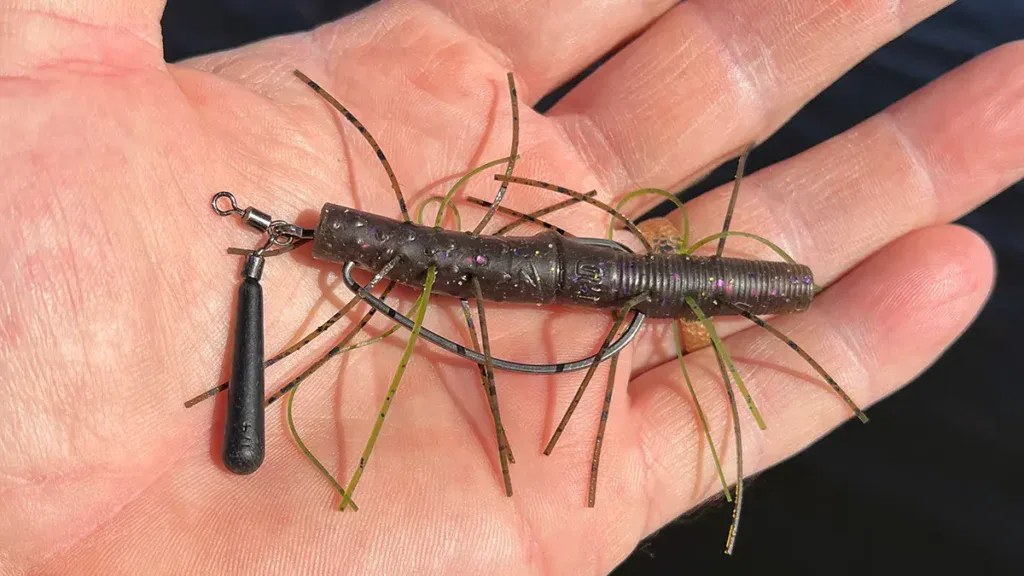
The Jika rig is something I have just recently started playing with. I recently bought Nako’s version of this “jighead” along with a handful of other oddballs that now fall into this category and tested them all out for an article on here. I found that I liked the Jika rig the best of the bunch, especially when pairing it with a Z-Man Fuzzy TRD.
In the water, this setup reminds me of a finesse jig, which works great in cooler water. But, the Jika rig is way more weedless, and the ElaZtech bait floats up off the bottom. And it’s truly weedless with the tucked hook point and slender weight. So, I now have a finesse jig alternative that I can throw in grass, brush, and laydowns and on hard bottoms. I’m really looking forward to getting more time with this one this November.
Spinnerbait

Spinnerbaits can’t go unmentioned in the fall, and November is perhaps the best month to fish one. Cooling water fires fish up and makes them aggressive. This isn’t the case when the water gets cold, but when it first starts to cool, it’s like a switch it flipped. This makes for a great situation for a spinnerbait. Bass annihilate these baits around cover and out in the open around balls of baitfish. A tandem Colorado/willow leaf spinnerbait works really well in 3/8 or 1/2 ounce. Z-Man Sling BaldeZ and Nichols Catalyst spinnerbaits are both good ones.
Buzzbait

November is the last month that most of us will be able to get a bite on top. Aggressive topwaters like Whopper Ploppers start to wind down early in the month, while you can still catch some fish on slower walking-style topwaters and poppers. I personally like to hold onto a buzzbait the longest, as I can slow these baits down a little and they’re not as agreeing as big prop baits, but I can also still cover water with them.
I prefer to throw a 3/8-ounce buzzbait as long as I can, just because I can throw them a little farther. But, there is a sweet spot late in the fall when a 1/4 ounce buzzbait is unbeatable. It takes very little effort to keep these baits on top and they can be fished really slow. And, don’t let the size fool you, these smaller baits still catch big ones.
Squarebill Crankbaits
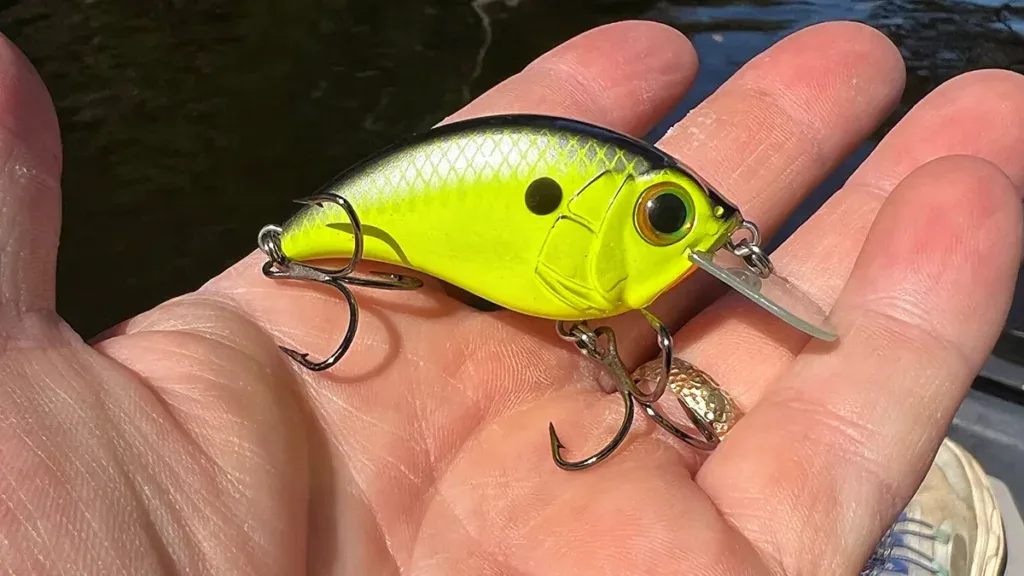
I really like a squarebill in November. Anything from a Bill Lewis SB-57 to a flat-sided Jackall Bling 55 works well this time of year. There are a lot of fish in the 0 to 6 foot range, and these two baits do a good job of covering that depth range. Reel these baits — or something like them — around wood, rock, docks, and other cover and you’re sure to run into a few fish.
And, don’t be scared of getting hung up. Throw around the cover to start with but then throw right into the meat of it before you leave. You’ll get stuck some, but that’s no big deal. Growing up, Dad always said, “If you’re not getting hung sometimes, you’re not throwing where the fish are.”
Squarebills are surprisingly weedless, so don’t be scared to go off in there after one. Just keep in mind the water is going to be cold if you get hung from the bank and get the bright idea to go in after it. In that situation, you might want to avoid throwing too far into the cover.
Tyler Williams’ Can’t Miss Advice for Maine
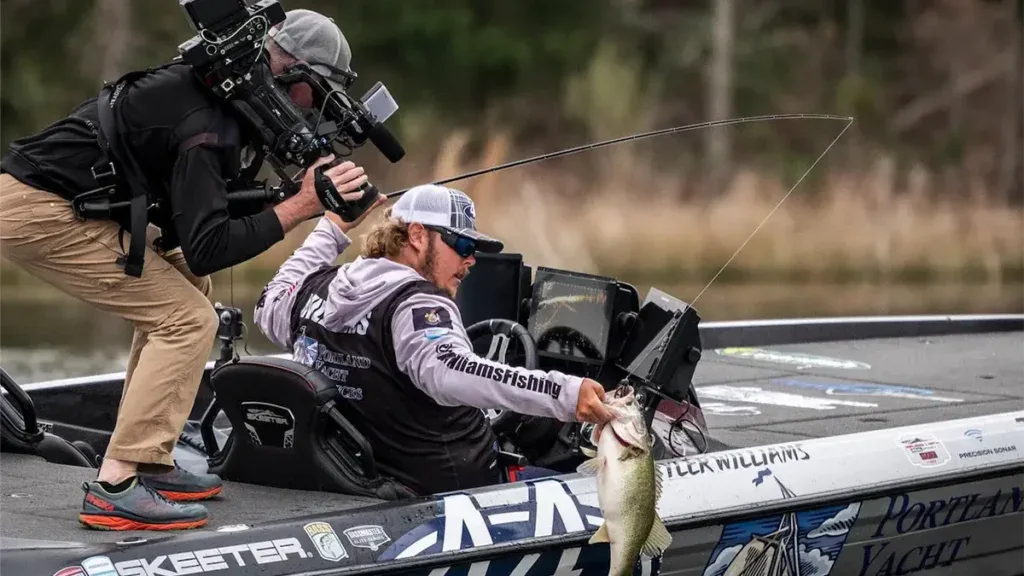
“My number one bait would be a jig, in some sort of brown and orange. It just gets bit. I like crawling it around isolated rock piles and the stretches of bank bass get on in the fall. You can’t go slow enough now.
“My second bait would have to be a Ned rig — same type of presentation as the jig, dragging it slow. But if you’re fishing a stretch or a place you know has fish, it’s a great clean-up bait.
“My third would be a jerkbait. It’s a bait that will get fish to show themselves and commit when you likely wouldn’t get a chance at with some other lure. Sometimes our fish get in a funk in the fall where they will only feed up. A lot of times, one hard twitch with a pause between will work better than the old twitch-twitch-pause. I’ve been fortunate to win a lot of fall club tournaments thanks to picking up on that bait when it’s tough.” — Tyler Williams
JT Thompkins’ South Carolina Guidebook

“During the month of November, whether it be coastal, in the rivers, or Hartwell, Clarks Hill, and those lakes; I’m going to be trying to cover as much water as I possibly can. And the best way for me to do that is by throwing about a half-ounce jig and a buzzbait. That’s the two baits I keep on the front deck at all times. If they’re on that buzzbait bite, I’ll lock it in my hand daylight to dark. It’s a bait that makes a lot of noise. You can slow it down, and you can speed it up. It just gets bit.”
“I fish the jig when I get on a high percentage area or if I decide to go deep for a little bit and fish around deep rock. During the cooler water temps, the jig is just such an easy bait. And then, if you get around the right structure up on the bank, and you want to slow down, you can just pitch your jig or just swim it around.
“Usually it’s an Arkie-style jig like the Juice Jig from Outkast Tackle. You can drag it on the bottom, you can swim it, you can skip around laydowns, docks, whatever it may be. And between those two baits, you’ll just be able to cover every inch of the water column and do it quickly and effectively.” — JT Thompkins


